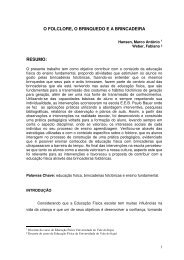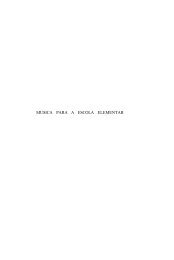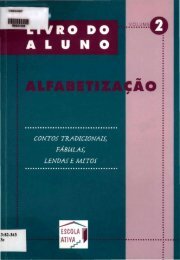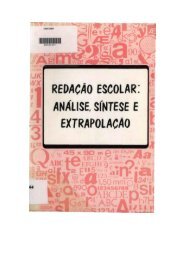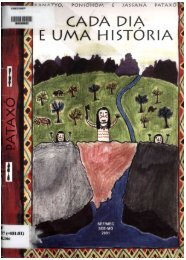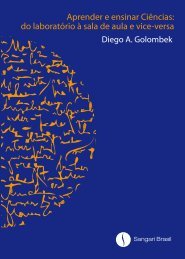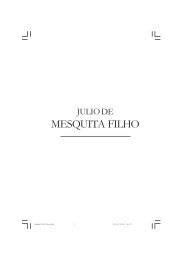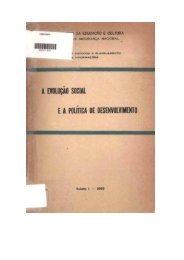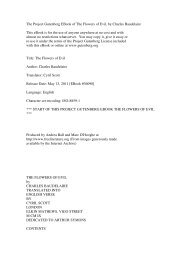A History of English Literature
A History of English Literature
A History of English Literature
Create successful ePaper yourself
Turn your PDF publications into a flip-book with our unique Google optimized e-Paper software.
written discussions, or may be assigned to individual students for oral<br />
reports in class. Oral reports should be either written out in full and<br />
read or given from notes; they should occupy five or ten minutes each and<br />
may include illustrative quotations. 1. The effect <strong>of</strong> Macaulay's<br />
self-confidence and dogmatism on the power <strong>of</strong> his writing and on the<br />
reader's feeling toward it. 2. His power in exposition; e.g., the number<br />
and concreteness <strong>of</strong> details, the power <strong>of</strong> selection, emphasis, and bringing<br />
out the essentials. 3. Structure, including Unity, Proportion, Movement. 4.<br />
Traits <strong>of</strong> style; e.g., use <strong>of</strong> antithesis and figures <strong>of</strong> speech; sentence<br />
length and balance. 5. How far does his lack <strong>of</strong> Idealism injure his work?<br />
Has he the power <strong>of</strong> appealing to the grand romantic imagination? 6. His<br />
power in description. 7. Power as a historian. Compare him with other<br />
historians.<br />
43. CARLYLE. Two days. Above, pages 309-314. Unless you are already<br />
familiar with 'Sartor Resartus' read in it Book II, chapters 6-9, and also<br />
if by any means possible Book III, chapters 5 and 8. Otherwise read in<br />
'Heroes and Hero-Worship' or 'The French Revolution.' (The first and third<br />
books <strong>of</strong> 'Sartor Resartus' purport to consist <strong>of</strong> extracts from a printed<br />
book <strong>of</strong> Teufelsdrockh, with comments by Carlyle; the second book outlines<br />
Teufelsdrockh's (Carlyle's) spiritual autobiography.) In 'Sartor Resartus':<br />
1. Make sure that you can tell definitely the precise meaning <strong>of</strong> The<br />
Everlasting No, The Center <strong>of</strong> Indifference, and The Everlasting Yea. Look<br />
up, e. g. in 'The Century Dictionary,' all terms that you do not<br />
understand, such as 'Baphometic Fire-Baptism.' 2. Your general opinion <strong>of</strong><br />
his style? 3. Note definitely its main peculiarities in (a) spirit; (b)<br />
vocabulary and word forms; (c) grammar and rhetoric.<br />
44. RUSKIN. Two days. Above, pages 314-319. Most convenient for the<br />
purposes <strong>of</strong> this study is Tinker's 'Selections from Ruskin' (Riverside<br />
<strong>Literature</strong> Series). Everything there is worth while; but among the best<br />
passages are 'The Throne,' page 138, and 'St. Mark's,' page 150; while<br />
pages 20-57 are rather more technical than the rest. Among Ruskin's<br />
complete works 'Sesame and Lilies,' 'The Crown <strong>of</strong> Wild Olives,' and<br />
'Praterita' are as available and characteristic as any. Subjects for<br />
written or oral reports: 1. His temperament and his fitness as a critic and<br />
teacher. 2. His style--eloquence, rhythm, etc. 3. His power <strong>of</strong> observation.<br />
4. His power in description. Consider both his sensitiveness to<br />
sense-impressions and his imagination. 5. His expository power. 6. His<br />
ideas on Art. How far are they sound? (In the 'Selections' there are<br />
relevant passages on pages 164, 200, and 233.) 7. His religious ideas. How<br />
far do they change with time? 8. His ideas on modern political economy and<br />
modern life. How far are they reasonable? (Perhaps 'Munera Pulveris' or<br />
'Unto This Last' states his views as well as any other one <strong>of</strong> his works.)<br />
9. Compare with Carlyle in temperament, ideas, and usefulness.<br />
45. MATTHEW ARNOLD. Three days. Above, pages 319-325. The poems read should<br />
include 'Sohrab and Rustum' and a number <strong>of</strong> the shorter ones. The<br />
discussion <strong>of</strong> the poems may treat: The combination in Arnold <strong>of</strong> classic and<br />
romantic qualities; distinguishing traits <strong>of</strong> emotion and expression; and,<br />
in 'Sohrab and Rustum,' narrative qualities. If you are familiar with<br />
Homer, consider precisely the ways in which Arnold imitates Homer's style.<br />
Of the prose works best read 'Culture and Anarchy,' at least the<br />
introduction (not the Preface), chapters 1, 3, 4 and 5, and the Conclusion.<br />
Otherwise read from the essays named in the text or from Pr<strong>of</strong>essor L. E.<br />
Gates' volume <strong>of</strong> Selections from Arnold. Consider more fully any <strong>of</strong> the<br />
points treated above. If you read the 'Essays on Translating Homer' note<br />
the four main qualities which Arnold finds in Homer's style.





